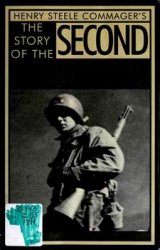But Marco's adventures were not over. Venice had gone to war with Genoa, another leading Italian city, and he
Ibn Battuta

His full name was Abu 'Abd Allah Muhammad ibn 'Abd Allah al-Lawati at-Tanji ibn Battuta; fortunately for non-Arabic speakers, however, he is known to history simply as Ibn Battuta (IB'n bah-TOO-tah; 1 304-c. 1 368). In spite of the fact that Marco Polo is much more well known outside the Arab world, in fact Ibn Battuta traveled much more widely. Over the space of twenty-nine years from 1 325 to 1354, he covered some seventy-five thousand miles, three times the distance around Earth at the Equator—a particularly impressive feat at a time when the average person had seldom traveled more than a few miles from home.
Ibn Battuta was born into a wealthy family in the Moroccan city of Tangier (tan-JEER). He originally planned to study law, and when he went away on his first long journey at the age of twenty-one, he did so with the intention of later settling down. Like most people in Tangier, Ibn Battuta was a devout Muslim, or follower of the Islamic religion established by Muhammad (see entry), and he planned to serve as an Islamic religious judge. His first trip, in fact, was a pilgrimage to the Muslim holy city of Mecca in what is now Saudi Arabia. This type of pilgrimage, called a hajj (HAHZH), is sacred to Islam, and all Muslims are encouraged to do it at least once. By the time of his death, Ibn Battuta had made the hajj a total of four times.
After his first hajj (1 325-27), Ibn Battuta made a side trip into Persia. He returned to Mecca, thus completing a second hajj, then sailed along the east African coast to the trading city of Kilwa in the far south before returning to Mecca yet again in 1330. But he was just getting started: over the next three years, he journeyed through Turkey, the Byzantine Empire, and southern Russia, at that time part of the Mongol lands. He then passed through Afghanistan and other parts of Central Asia before entering India from the north.
Eventually Ibn Battuta wound up in the court of the ruthless sultan Muham-
Became captain of a warship. In 1298, he was captured and thrown in a Genoese prison, where he met a writer named Rustichello (rus-ti-CHEL-oh).
Marco told Rustichello about his travels, and Rustichello began writing a book that would become known in English as The Book of Ser Marco Polo the Venetian Concerning the Kingdoms and Marvels of the East, or The Description of the World. The book would later be recognized as the basis for scientific geography, and greatly expanded Europeans' underMiddle Ages: Biographies

Muslims gather to worship in the Great Mosque in Mecca. All Muslims are encouraged to make a pilgrimage to Mecca (a hajj) at least once; Ibn Battuta did it four times. Reproduced by permission of the Library of Congress.
Mad ibn Tughluq (tug-LUK; ruled 1325-51; see box in Ala-ud-din Muhammad Khalji entry) in the great Indian city of Delhi (DEL-ee). Despite Tughluq's bloodthirsty reputation, Ibn Battuta managed to remain in his service as a judge for eight years. Tughluq sent him on an official visit to the Mongol emperor of China, a later successor to Kublai Khan, but Ibn Battuta was shipwrecked, and never returned to Tughluq's court.
During the next few years, Ibn Battuta visited Ceylon, Southeast Asia, and China—possibly even as far north as the capital at Beijing. He then made the long journey home, stopping in Mecca a fourth time; but he quickly headed out again, this time to Muslim Spain and then south, across the Sahara into the splendid African empire of Mali.
Ibn Battuta stopped traveling in 1354, after which he sat down to write the record of his journeys in a volume translated as The Travels of Ibn Battuta. Along with all the other activity that filled his life, Ibn Battuta had many wives and children, and died when he was more than sixty years old.
Standing of the world. Prior to Marco's mention of the Pamirs, for instance, no one in Europe had ever heard of those mountains. He was also the first European to describe places such as Tibet and Burma, lands that would not be visited again by people from the West until the 1800s.
Marco introduced Europeans to a wealth of new ideas, from paper money to playing cards. In addition, his book excited the interest of future explorers, among them Portugal's Prince Henry the Navigator (1394-1460; see entry), who vir-
Tually launched the Age of Exploration when he ordered a number of Portuguese voyages around the coast of Africa. The record of the Polos' difficult journey also affected a young sailor from Genoa named Christopher Columbus, who in 1492 set out to reach Cathay by sailing west—and instead discovered the New World.
Modern scholars believe Marco's reports to be amazingly accurate, though many of his neighbors had a hard time believing his tall tales. Later he married, had three daughters, and became a modestly successful merchant, but his reputation followed him to his death at age seventy. Relatives tried to get him to renounce what they thought were lies about deserts full of whispering voices and banquets with six thousand guests, but he refused; on his deathbed he announced, "I have not told half of what I saw."




 World History
World History



![The General Who Never Lost a Battle [History of the Second World War 29]](/uploads/posts/2015-05/1432581983_1425486253_part-29.jpeg)





